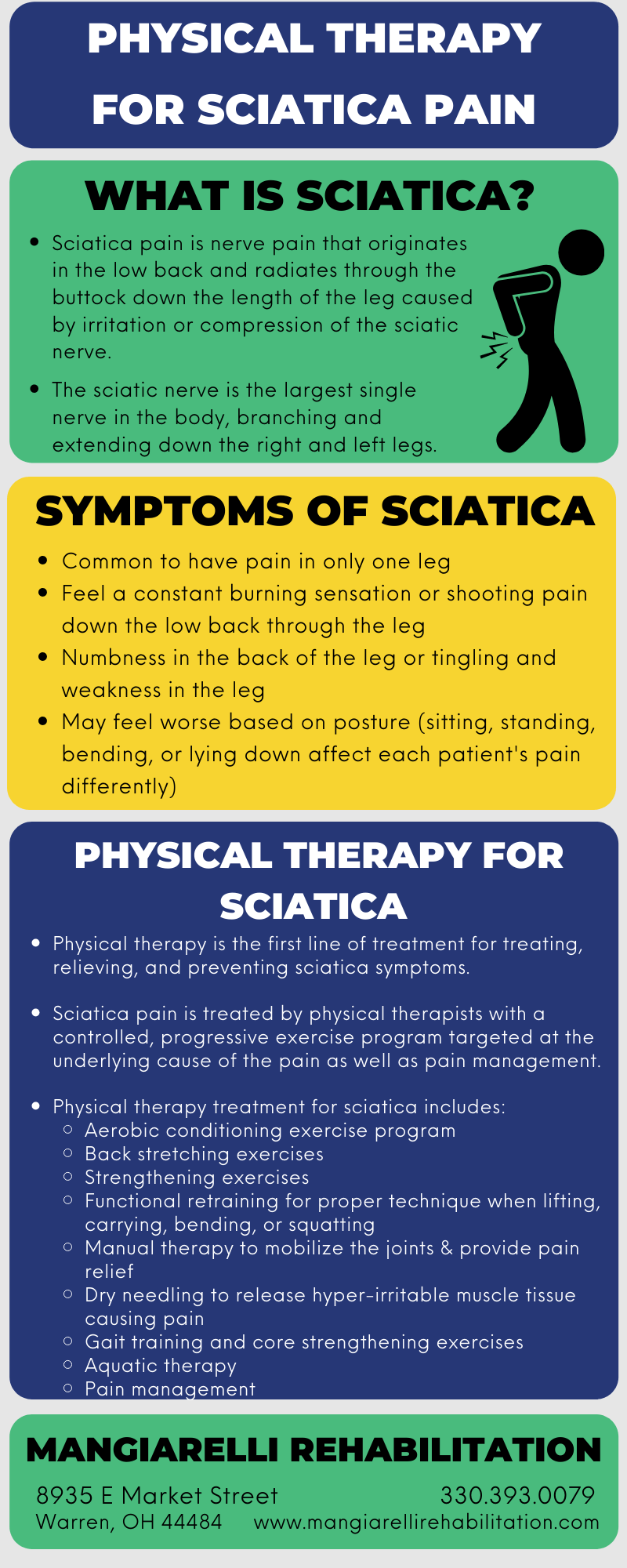Physical Therapy for Sciatica Pain [Infographic]
Physical therapy is the most effective treatment for sciatica pain. Sciatica is nerve pain that originates in the low back and radiates through the buttock down the length of the leg caused by irritation or compression of the sciatic nerve.
The sciatic nerve is the longest and largest nerve in the body, originating at the base of the spine and moving through the pelvis and gluteal region, branching and continuing down the back of the thighs to the foot. The sciatic nerve plays an important role in lower body function. The sciatic nerve provides direct motor function to the hamstrings and lower extremity adductors and indirect motor function to the calf muscles and anterior lower leg muscles.
Common causes of sciatica pain can include injuries during a sport, fall, or car accident; spinal stenosis (spinal canal narrowing); or a herniated disc that compresses or irritates the sciatic nerve. There are several factors that heighten the risk of developing sciatica: repeated lifting, participating in weight-bearing sports, obesity, a sedentary lifestyle, smoking, and poor posture. Sciatica is more common in older adults and those in their thirties and forties. Four out of ten people will experience some sciatica pain or irritation at some point in their lives.
With sciatica, it is common to have pain down only one leg. An individual may feel a constant burning sensation or shooting pain down the low back through the leg. Numbness, tingling, and weakness in the affected leg can also occur. Certain postures can worsen pain, such as sitting, standing, bending, and lying down.
Physical therapy is the first line of treatment for treating, relieving, and preventing sciatica symptoms. The physical therapist provides pain management using heat, ice, ultrasound, and a TENs unit. Physical therapy treats sciatica with targeted strengthening of the low back, gluteal muscles, and hips as well as a controlled, progressive exercise program. Strength training helps to reinforce and support the spinal column and muscles, ligaments, and tendons that surround the nerve.
Physical therapy for sciatica can also include back stretching exercises; functional retraining for proper technique when lifting, carrying, bending, or squatting; manual therapy to mobilize joints and provide pain relief; dry needling to release hyper-irritable muscle tissue that is causing pain; gait training; core strengthening exercises to improve trunk strength and stability; and aquatic therapy using warm water therapy for pain relief and greater ease exercising.
Sciatica pain can be debilitating and limit your daily activities and function. Work with our physical therapists to help you manage pain and regain strength and mobility!
